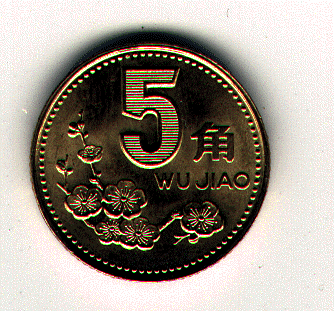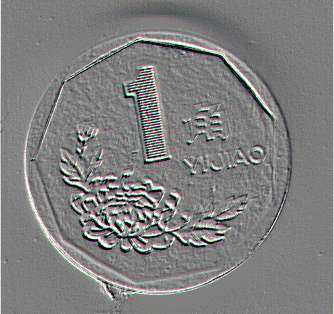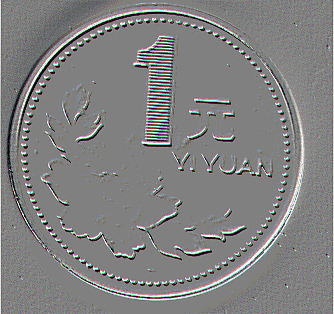|
|
|
Chinese Money
On this page I have posted the most common denominations of Chinese money you will see and use while travelling this great land. I remember how confused I was on my first trip to Asia when it came to figuring out the money systems. One problem most people have when it comes to foreign currency is that we tend to still think in terms of dollars. So, when we run into McDonald's for refuge and familiar food, we are shocked to see that a simple hambuger--or hamburg as they say up North--costs 5.90Y (or more depending upon which country you happen to be in at the time). Of course our first impression--after we are revived--is that the food is too expensive. In some respect it is over-priced compared to Chinese food. For example, there's a nice resturant near my house where I can feed four people--large portions plus drinks--for 28 Yuan. (And trust me, you get more food than back home for sure, and the food is much better than McDonald's any day). Getting back to the hamburger. The main currency in China (Zhongguo in pinyin) is the YUAN [also referred to as RMB] which is equivalent to the U.S. DOLLAR. The exchange rate fluctuates between 8 & 9 Yuan to the Dollar. So, that hamburger we thought was so expensive is actually about the same price as we pay back home. (5.90 Yuan = approximately $.75 seventy-five cents).
On Chinese money you will see the denomination identified in three ways: Chinese Characters, Pinyin (the Chinese phonetics with neutral tones), and numerically. Currency is distributed in both paper and coin. This can be confusing to some first time travellers so it is important to pay attention to the following terms: YUAN and JIAO.
The Yuan is the Chinese dollar and the Jiao is the Chinese dime. You will see Yi Jiao (1 dime, ten cents) on coin and paper. The same goes for the Wu Jiao (5 dimes, fifty cents). You will also see the Er Jiao (2 dimes, twenty cents).
Everything in China is priced by the Yuan, although you will see Jiao irregularly, such as at the Open Market or in Super Markets, department stores and the like. (Note: Prices less than Yuan are extremely rare).
A quick conversion of Chinese money follows:
1 Jiao=10 cents
5 Jiao=50 cents
10 Jiao=1 Yuan
8 Yuan=1 Dollar (approx.)
I came to Shenzhen without a coat to save space in my baggage. Then, came a cold snap. I needed a jacket. So off to the market I went. It took some time to find something I liked, and wasn't too small, for a price that I deemed reasonable. The shop keeper wanted 80 Yuan; I held out for 50. Converting this you will see that I was able to buy a very nice jacket for less than 10 dollars. But you cannot haggle at every store. The Supermarket where I usually buy food has set prices, while the Open Market is more flexible, however, the food at the Open Market is not always as safe to eat. But there are many places around the city where you should haggle over the price. It's expected.

Yi Jiao (paper)

Er Jiao (paper)

Wu Jiao (paper)

Yi Yuan

Er Yuan

Wu Yuan

Shi Yuan (10 yuan)

WuShi Yuan (50 Yuan)

YiBai Yuan (100 Yuan)



From left to right:
Wu Jiao Coin brass colored, Yi Jiao Coin aluminum-like, Yi Yuan Coin nickle
The Wu Jiao is little larger or about the same size as a Nickle.
The Yi Jiao is thicker than the Wu Jiao and a little larger.
The Yi Yuan is about the size of a quarter.